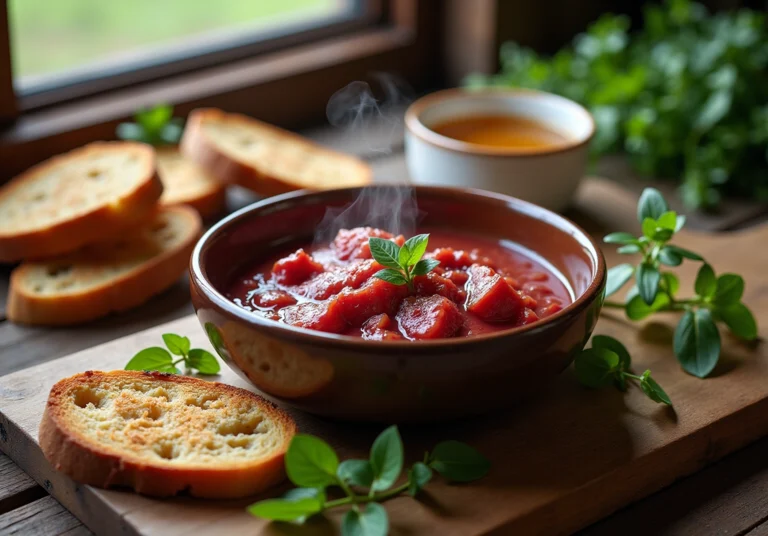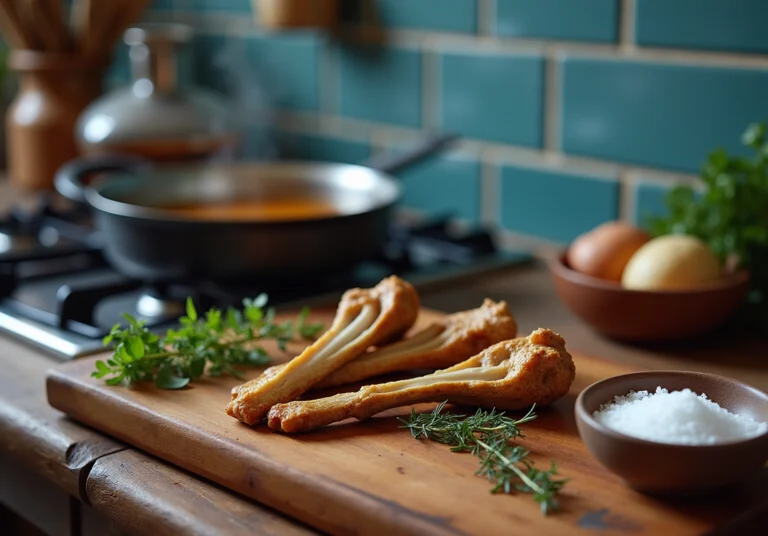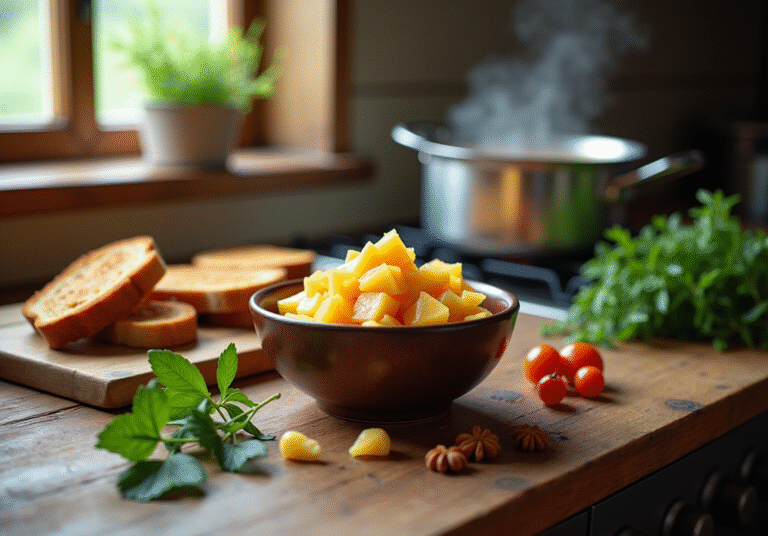How to Eat Bone Marrow: Safe Preparation and Enjoyment Tips
Overview
To safely and enjoyably consume bone marrow, it is essential to:
- Soak the bones
- Roast them at high temperatures
- Incorporate them into various dishes such as soups or spreads on toast
This article provides a detailed, step-by-step preparation method, emphasizing the importance of selecting quality ingredients and thoroughly cooking them. This approach not only ensures safety but also maximizes the nutritional benefits of bone marrow. By following these guidelines, you can enhance your culinary experience and enjoy the rich flavors and health advantages that bone marrow has to offer.
Introduction
Bone marrow, often overlooked in the culinary world, represents a nutrient-dense treasure nestled within the bones of beef and lamb. This delicacy is rich in essential nutrients such as collagen and vitamin B12. Not only does it enhance meals with its buttery flavor, but it also supports overall health and vitality.
However, navigating the journey from bone to plate requires careful preparation and safety considerations that are crucial for an enjoyable experience.
How can one effectively incorporate this delicacy into everyday meals while ensuring both flavor and safety?
Understand Bone Marrow: Nutritional Benefits and Culinary Uses
The inner tissue is a nutrient-rich material located at the core of skeletal structures, particularly in beef and lamb. This tissue is high in calories and fat, yet it is also packed with essential nutrients such as collagen, vitamin B12, riboflavin, and conjugated linoleic acid. These nutrients support joint health, improve skin elasticity, and enhance overall vitality. Culinary-wise, this substance can be roasted, used in broths, or spread on toast, providing various options for those interested in how to eat bone marrow. Chefs and home cooks alike often explore how to eat bone marrow, as its rich, buttery flavor adds depth to soups and sauces.
Including ribeye steak in your diet, especially when made with grass-fed components, enhances the advantages of marrow. A simple yet nutritious ribeye steak recipe includes:
- 2 ribeye steaks, about 1 inch thick
- 2 tablespoons grass-fed butter
- Salt to taste
- Freshly ground black pepper to taste
- 1 tablespoon olive oil
- Fresh herbs for garnish (optional, like thyme or rosemary)
This dish not only provides a delicious meal but also aligns with anti-aging strategies by emphasizing quality animal-based foods that support longevity.
ByKomi.com advocates for a carnivore diet, which can be a significant part of a healthy lifestyle, promoting vitality and well-being. The eating habits of the Hunza community, recognized for their extraordinary lifespan, further emphasize the significance of nutrient-dense foods such as ribeye and connective tissue in attaining a healthy, extended life.
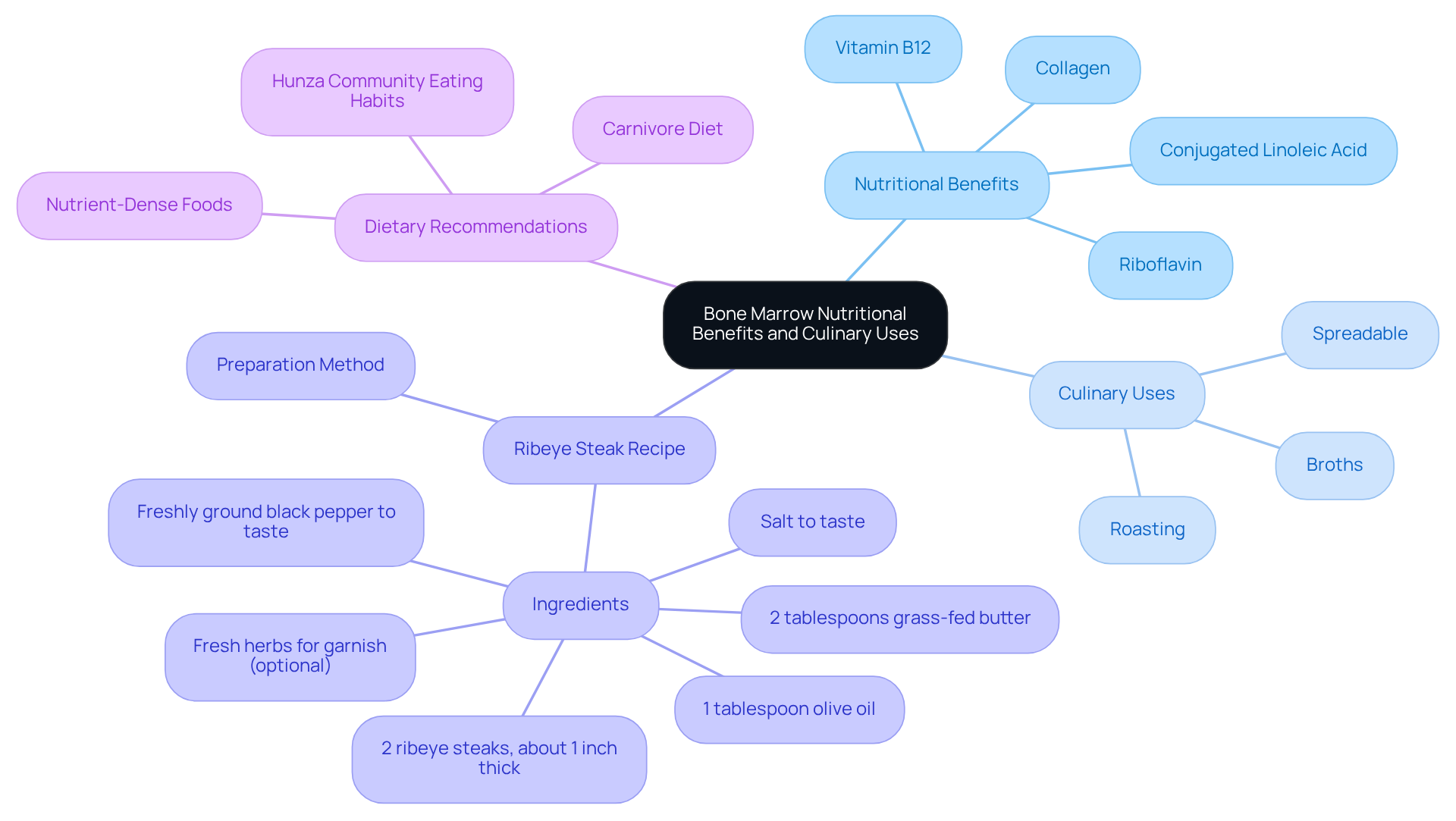
Prepare Bone Marrow: Step-by-Step Cooking Instructions
-
Soak the Joints: Begin by immersing the pieces in salted water for 24 hours. This initial step is crucial as it helps draw out impurities and blood, leading to a cleaner taste. Place the remnants in a bowl, cover them with water, and add a generous amount of salt. Refrigerate for a day to achieve optimal results.
-
Preheat the Oven: Set your oven to 450°F (230°C). This high temperature is essential for effectively roasting the bones.
-
Prepare the Bones: After soaking, drain the bones and rinse them under cold water. Arrange them cut-side up on a baking sheet lined with foil or parchment paper.
-
Season the Bones: Generously sprinkle the exposed interior with sea salt and freshly ground black pepper. For an added layer of flavor, consider incorporating herbs like thyme or rosemary.
-
Roast the Skeletons: Place the skeletons in the preheated oven and roast for approximately 15-20 minutes, or until the center is soft and begins to bubble. Keep a watchful eye to prevent burning.
Here are some tips on how to eat bone marrow.
- Serve: Once roasted, remove the carcasses from the oven, allow them to cool slightly, and discover how to eat bone marrow. Serve immediately with toasted bread or crackers for spreading.

Enjoy Bone Marrow: Creative Ways to Incorporate It into Your Meals
Spread on Toast
One of the simplest and most popular ways to enjoy the rich tissue is by spreading it on toasted bread. The buttery flavor pairs perfectly with a sprinkle of sea salt and a squeeze of lemon juice, creating a delightful experience.
Incorporate into Soups
Adding roasted animal fat to soups can significantly enhance their richness and depth. This method works particularly well in beef broth or vegetable soups, enriching the overall flavor profile and providing a comforting taste.
Use in Sauces
Incorporating animal fat into sauces for meats or pasta dishes introduces a luxurious texture and flavor. This addition elevates the dish, making it more satisfying and enjoyable.
Garnish for Steaks
Serving roasted bone tissue as a garnish for grilled steaks offers a unique touch. As the substance melts into the meat, it creates a deliciously rich experience that enhances how to eat bone marrow alongside the steak’s natural flavors.
Mix into Risotto
Stirring in some bone fat into risotto provides a creamy, decadent finish. This not only complements the dish’s flavors beautifully but also adds nutritional value, making it a wholesome choice.
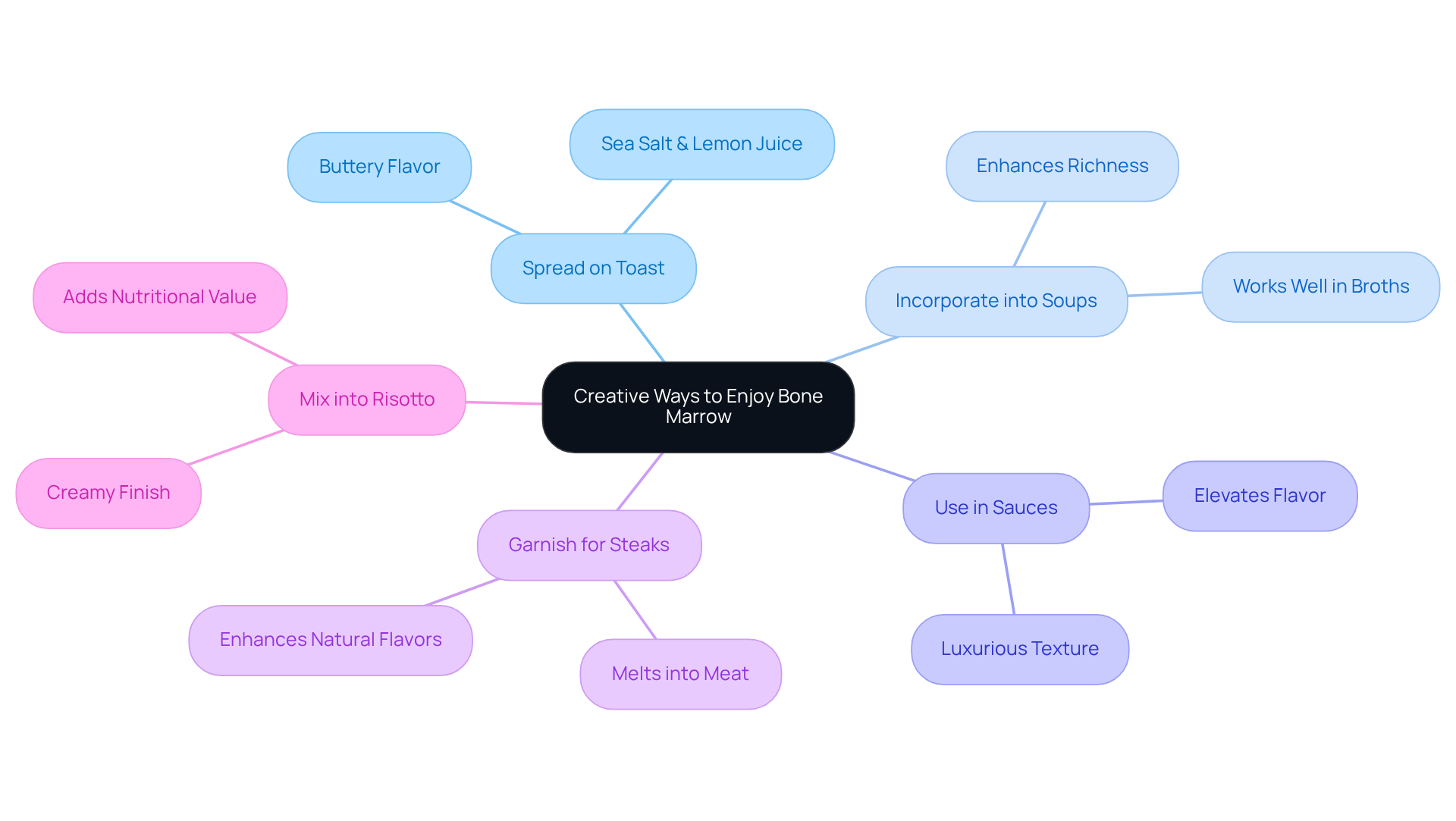
Consider Safety: Health Tips and Precautions for Eating Bone Marrow
-
Select Quality Ingredients: Always obtain cartilage-rich items from trustworthy vendors, ideally from grass-fed or organic origins. This practice ensures that the bones are free from harmful additives and raised in healthy conditions, aligning with the principles of a carnivore diet that emphasizes quality animal-based foods for optimal health.
-
Ensure thorough cooking to eliminate any potential bacteria, with an internal temperature reaching at least 145°F (63°C). Proper cooking not only enhances flavor but also preserves the nutritional benefits that contribute to anti-aging strategies.
-
Moderation is Key: While skeletal tissue is nutritious and packed with essential fats and nutrients that support longevity, it is also high in calories. Consume it in moderation to avoid excessive calorie intake, balancing it with other nutrient-dense foods as part of a holistic approach to health.
-
Be Aware of Allergies: Some individuals may have allergies or sensitivities to certain types of meat. If you are trying the inner tissue of the bone for the first time, begin with a small quantity to assess your body’s response. This ensures that your path towards a healthier diet is both safe and enjoyable.
-
If you have any underlying health conditions or dietary restrictions, consult a healthcare provider about how to eat bone marrow before adding it to your diet. This crucial step will help you integrate innovative therapies and nutritional strategies into your lifestyle effectively.
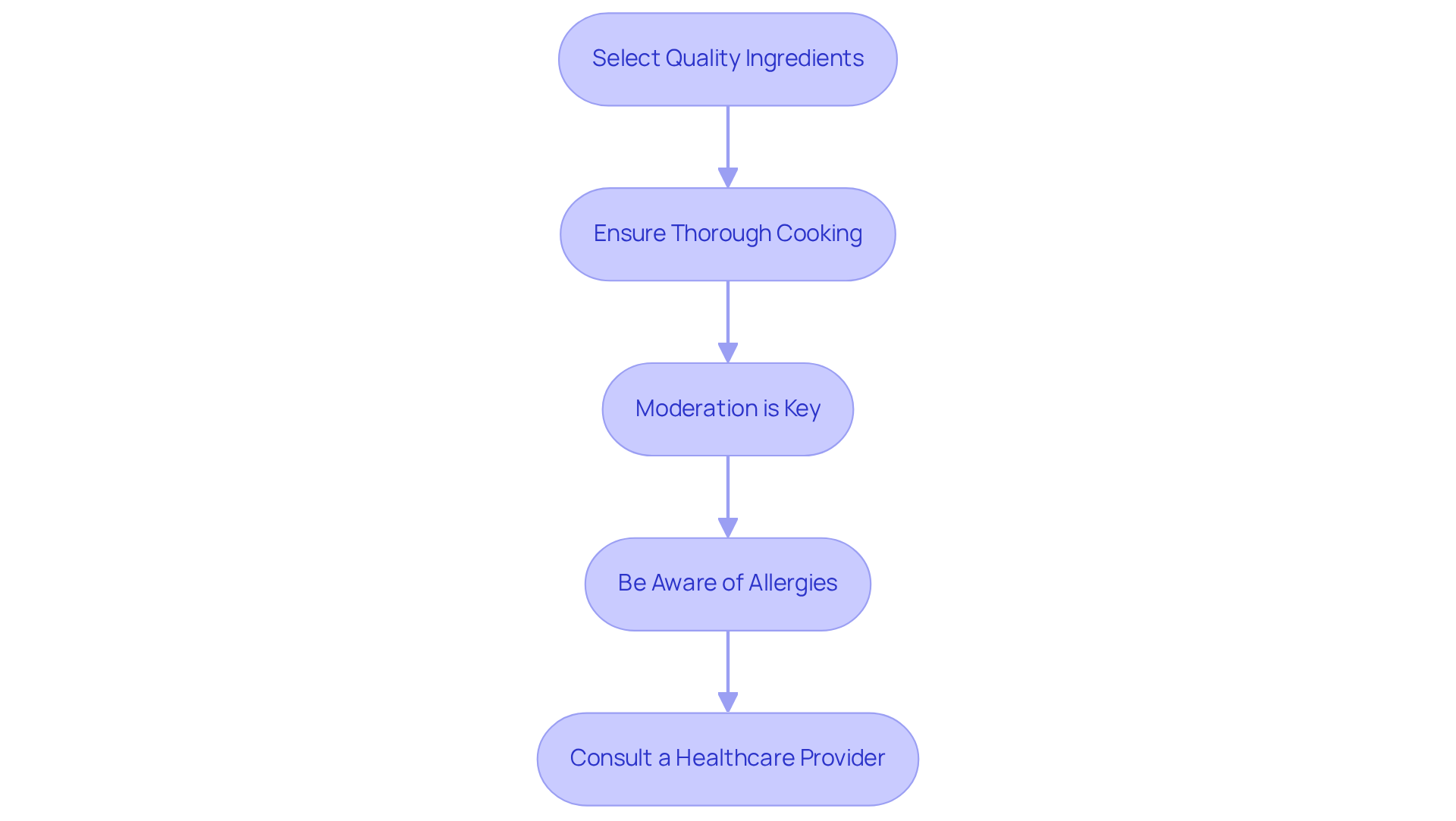
Conclusion
Bone marrow is a culinary treasure that offers both rich flavor and remarkable nutritional benefits. By understanding its preparation, safety measures, and various ways to enjoy this delicacy, individuals can incorporate it into their diets healthily and deliciously. This guide has illuminated the path to appreciating bone marrow, from soaking and roasting to creative culinary applications.
Key insights include:
- The importance of sourcing high-quality bones
- The step-by-step cooking instructions that ensure safety and flavor
- The numerous ways to enjoy bone marrow, such as spreading it on toast or incorporating it into soups and sauces
Each method not only enhances the dish but also adds nutritional value, supporting a vibrant and health-conscious lifestyle.
As bone marrow gains popularity, it serves as a reminder of the benefits of nutrient-dense foods in our diets. Embracing such ingredients can lead to improved well-being and longevity. Whether one is a seasoned chef or a curious home cook, exploring how to eat bone marrow can open doors to new flavors and health benefits. The journey of culinary discovery awaits; why not start today?
Frequently Asked Questions
What is bone marrow and where is it found?
Bone marrow is a nutrient-rich inner tissue located at the core of skeletal structures, particularly in beef and lamb.
What are the nutritional benefits of bone marrow?
Bone marrow is high in calories and fat and is packed with essential nutrients such as collagen, vitamin B12, riboflavin, and conjugated linoleic acid, which support joint health, improve skin elasticity, and enhance overall vitality.
How can bone marrow be prepared and consumed?
Bone marrow can be roasted, used in broths, or spread on toast, providing various culinary options for those interested in how to eat it.
What role does ribeye steak play in relation to bone marrow?
Including ribeye steak in your diet, especially when made with grass-fed components, enhances the advantages of marrow and contributes to a nutritious meal.
Can you provide a simple recipe for ribeye steak?
A simple ribeye steak recipe includes 2 ribeye steaks (about 1 inch thick), 2 tablespoons of grass-fed butter, salt, freshly ground black pepper, 1 tablespoon of olive oil, and optional fresh herbs for garnish.
How does consuming bone marrow and ribeye steak align with anti-aging strategies?
This diet emphasizes quality animal-based foods that support longevity and is part of a nutritious meal, which can contribute to anti-aging strategies.
What dietary approach does ByKomi.com advocate for?
ByKomi.com advocates for a carnivore diet, which promotes vitality and well-being by focusing on nutrient-dense foods.
What community is mentioned in relation to healthy eating habits and longevity?
The Hunza community is recognized for their extraordinary lifespan and emphasizes the significance of nutrient-dense foods such as ribeye and connective tissue for achieving a healthy, extended life.

